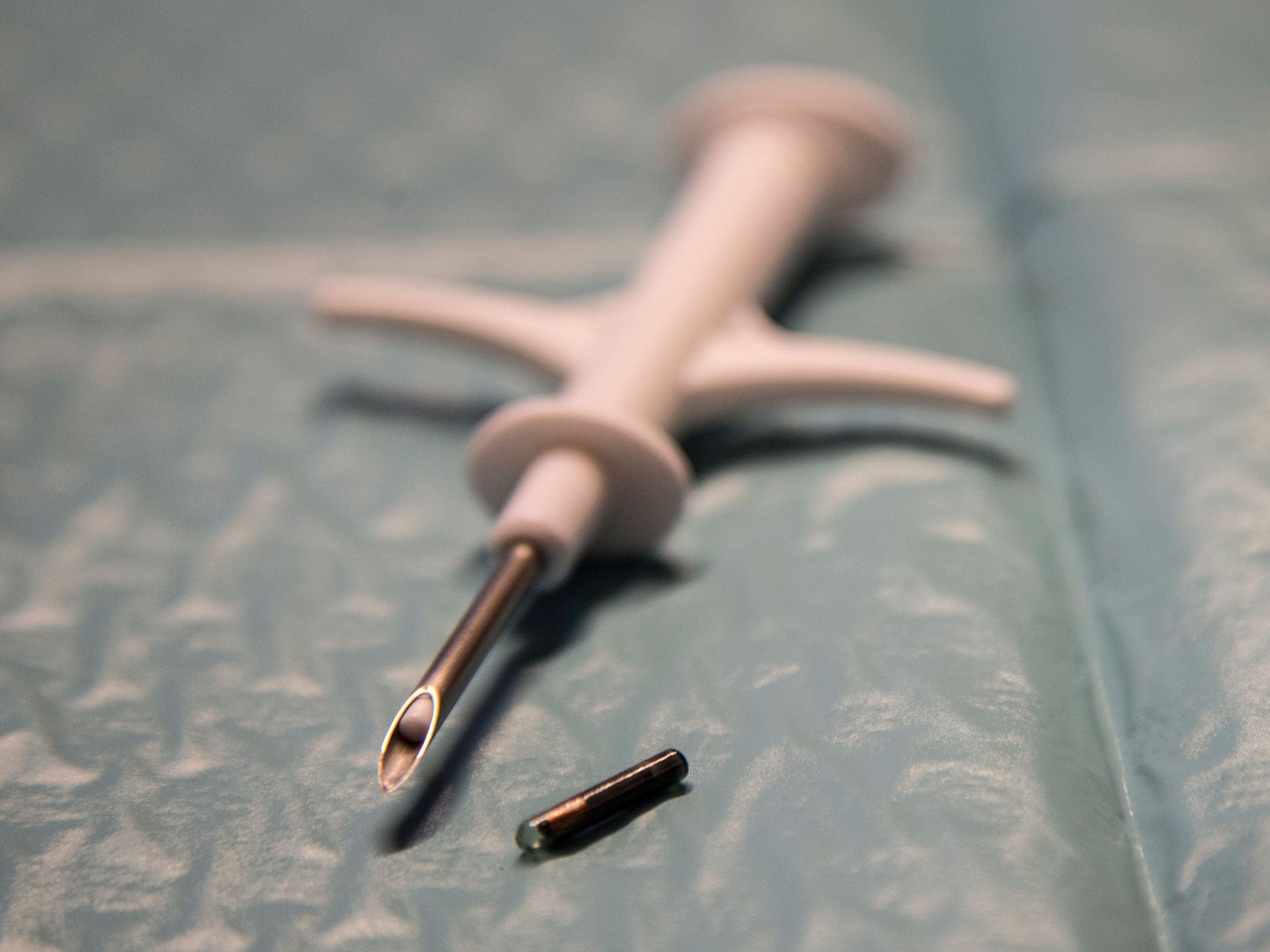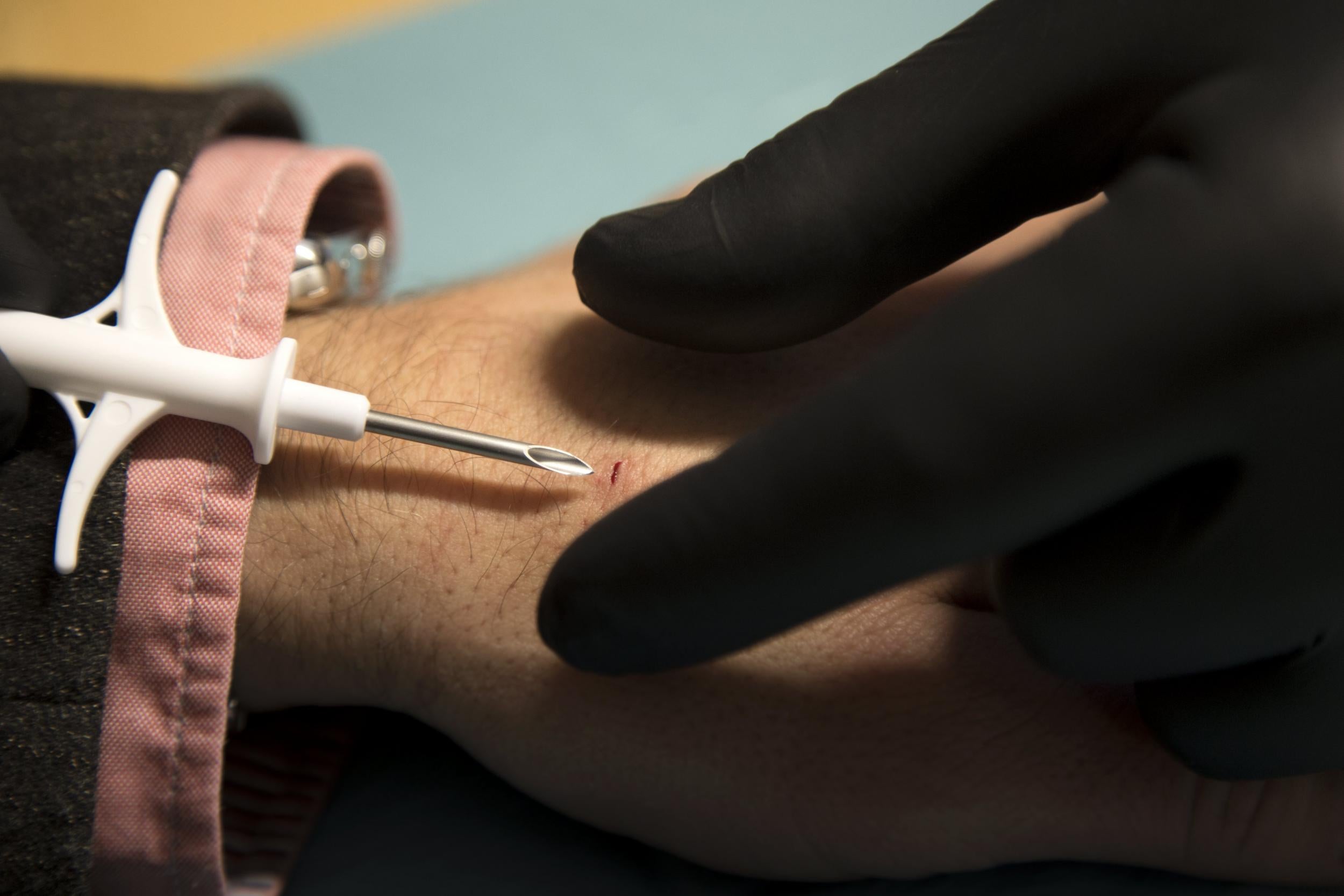Swedish cyborg craze sees more than 4,000 Swedes insert chips under their skin
RFID technology, which is used in everything from credit cards to passports, is finding its way into the human body
Your support helps us to tell the story
From reproductive rights to climate change to Big Tech, The Independent is on the ground when the story is developing. Whether it's investigating the financials of Elon Musk's pro-Trump PAC or producing our latest documentary, 'The A Word', which shines a light on the American women fighting for reproductive rights, we know how important it is to parse out the facts from the messaging.
At such a critical moment in US history, we need reporters on the ground. Your donation allows us to keep sending journalists to speak to both sides of the story.
The Independent is trusted by Americans across the entire political spectrum. And unlike many other quality news outlets, we choose not to lock Americans out of our reporting and analysis with paywalls. We believe quality journalism should be available to everyone, paid for by those who can afford it.
Your support makes all the difference.Thousands of people in Sweden have been implanting microchips in their hands as part of a new biohacking trend in the country that aims to make people's daily lives easier.
Biohax, one of the companies involved in implanting the chips, said it has now carried out more than 4,000 "installs" of the technology since it launched five years ago, allowing people to replace physical key cards, IDs and train tickets.
The subdermal chips, which are injected beneath the skin between the thumb and forefinger, use radio-frequency identification (RFID) technology, which is found in everything from credit cards to passports.

The chips can be read by any device that supports near field communication (NFC), meaning most modern Android smartphones can recognise them. They do not need recharging as they do not require a battery to function.
They negate the need for things like physical cards, pass codes and signatures, potentially allowing efficient and frictionless transactions at checkouts, international borders and travel terminals. However, the nature of the device means they have raised privacy concerns, with some weary of the chips being used to track people.
Beyond efficiency, the creators of the implantable RFID chips claim they help reduce plastic waste, with figures from the International Card Manufacturers Association estimating that six billion cards produced each year.
"In the past years, we've succeeded to replace an assist several corporations to exchange their plastic access cards into the Biohax install," the company's website states.
"We've accomplished to assist the Swedish national railway system to enable the Biohax install as a replacement for paper tickets and plastic travel cards."

A Swedish-language Facebook page dedicated to subdermal RFID chips has received almost 7,000 likes, with advocates claiming that the technology is on the verge of becoming mainstream.
Zoltan Istvan, a noted transhumanist who was among the first adopters of the technology, told The Independent that the number of uses of the chips continue to evolve, though there are still limitations.
"I had an RFID chip inserted into my hand three years ago and use it to get in and out of my home, which is great because I don't need to carry around house keys anymore," he said.
"Unfortunately, technological progress means my chip is already relatively behind the current technology and it will take a surgical procedure to upgrade it, albeit minor."
One potential solution to this issue, Mr Istvan said, would be to implant a tube beneath a flap of skin, from which chips can easily be inserted and removed.

Join our commenting forum
Join thought-provoking conversations, follow other Independent readers and see their replies
Comments